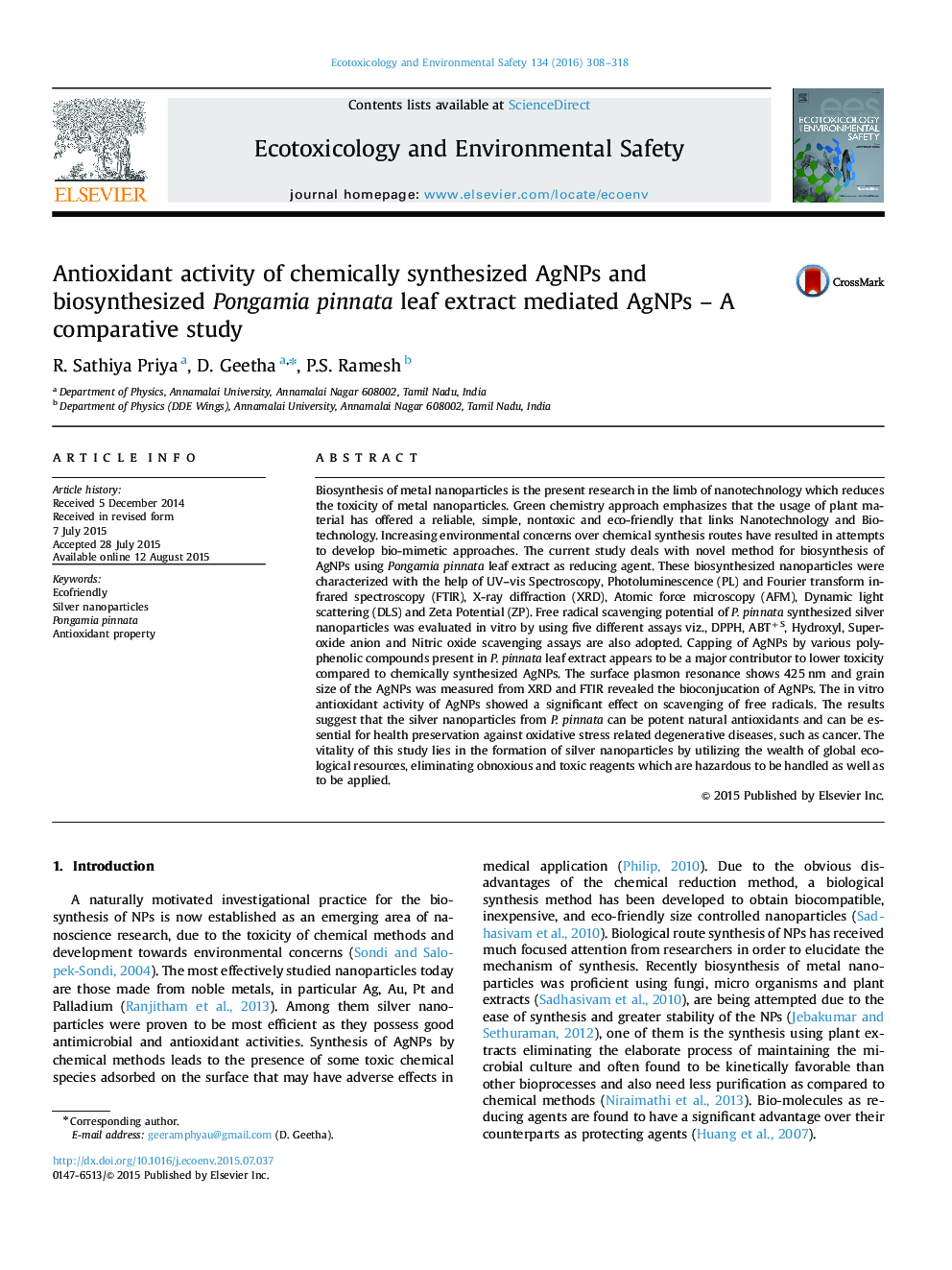| کد مقاله | کد نشریه | سال انتشار | مقاله انگلیسی | نسخه تمام متن |
|---|---|---|---|---|
| 5748089 | 1412448 | 2016 | 11 صفحه PDF | دانلود رایگان |

- Pongamia pinnata leaf is good source for the synthesis of AgNPs at specific reaction condition (pH, time) and toxic free.
- FTIR to reveal the bioconjucation of phytochemicals on the surface of AgNPs.
- Antioxidant response for the PPAgNPs is high when compared with AgNPs.
Biosynthesis of metal nanoparticles is the present research in the limb of nanotechnology which reduces the toxicity of metal nanoparticles. Green chemistry approach emphasizes that the usage of plant material has offered a reliable, simple, nontoxic and eco-friendly that links Nanotechnology and Biotechnology. Increasing environmental concerns over chemical synthesis routes have resulted in attempts to develop bio-mimetic approaches. The current study deals with novel method for biosynthesis of AgNPs using Pongamia pinnata leaf extract as reducing agent. These biosynthesized nanoparticles were characterized with the help of UV-vis Spectroscopy, Photoluminescence (PL) and Fourier transform infrared spectroscopy (FTIR), X-ray diffraction (XRD), Atomic force microscopy (AFM), Dynamic light scattering (DLS) and Zeta Potential (ZP). Free radical scavenging potential of P. pinnata synthesized silver nanoparticles was evaluated in vitro by using five different assays viz., DPPH, ABT+S, Hydroxyl, Superoxide anion and Nitric oxide scavenging assays are also adopted. Capping of AgNPs by various polyphenolic compounds present in P. pinnata leaf extract appears to be a major contributor to lower toxicity compared to chemically synthesized AgNPs. The surface plasmon resonance shows 425Â nm and grain size of the AgNPs was measured from XRD and FTIR revealed the bioconjucation of AgNPs. The in vitro antioxidant activity of AgNPs showed a significant effect on scavenging of free radicals. The results suggest that the silver nanoparticles from P. pinnata can be potent natural antioxidants and can be essential for health preservation against oxidative stress related degenerative diseases, such as cancer. The vitality of this study lies in the formation of silver nanoparticles by utilizing the wealth of global ecological resources, eliminating obnoxious and toxic reagents which are hazardous to be handled as well as to be applied.
Graphical Abstract
Journal: Ecotoxicology and Environmental Safety - Volume 134, Part 2, December 2016, Pages 308-318